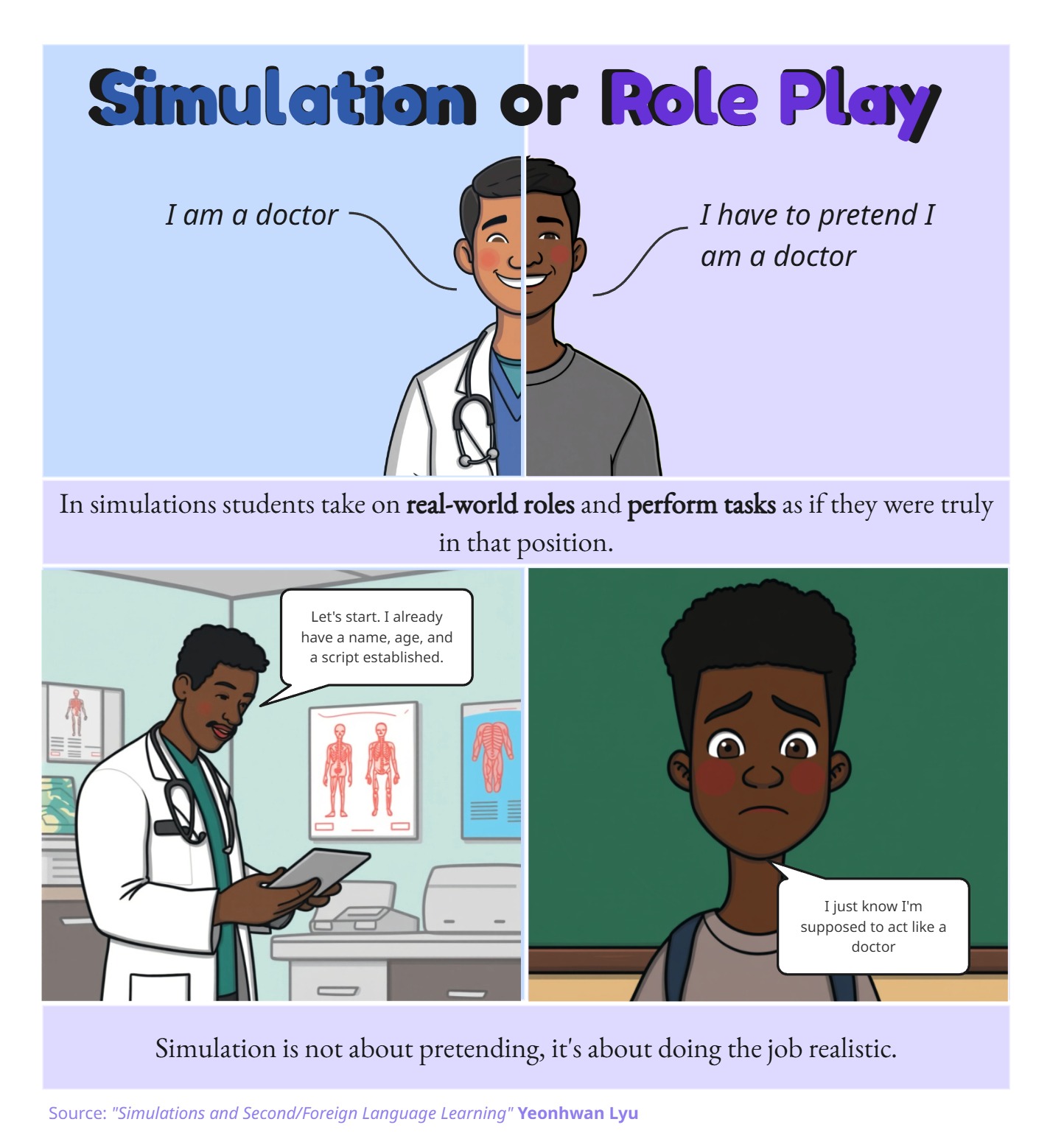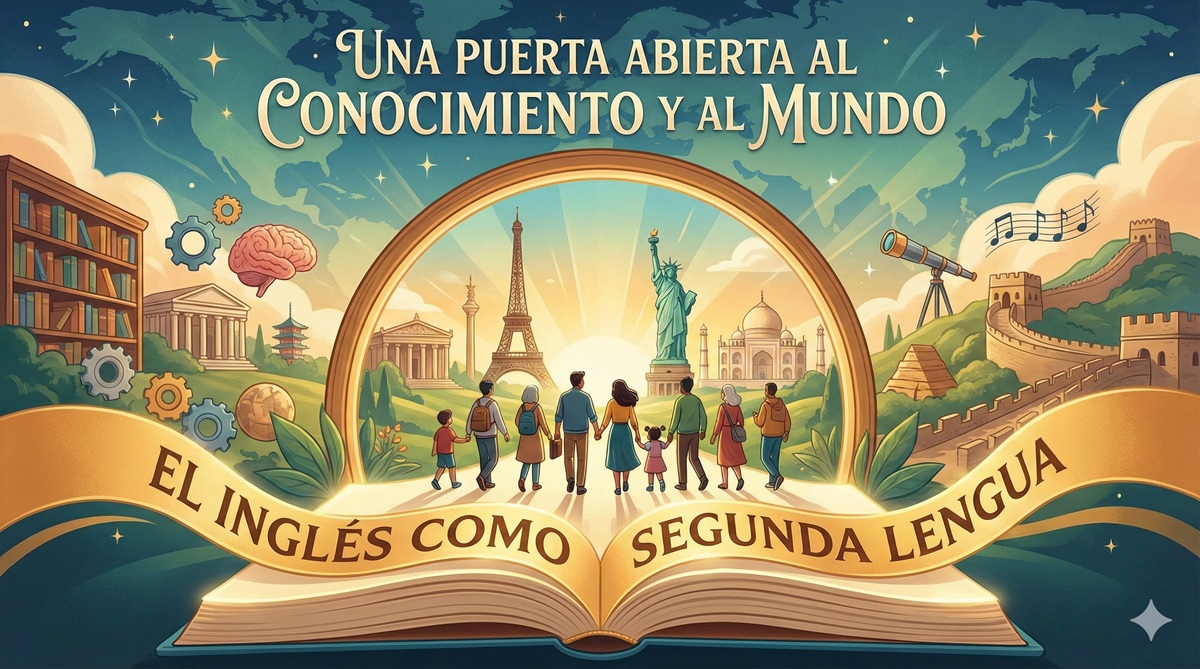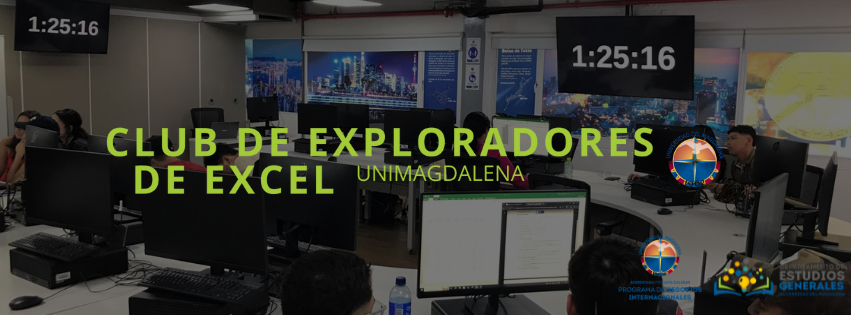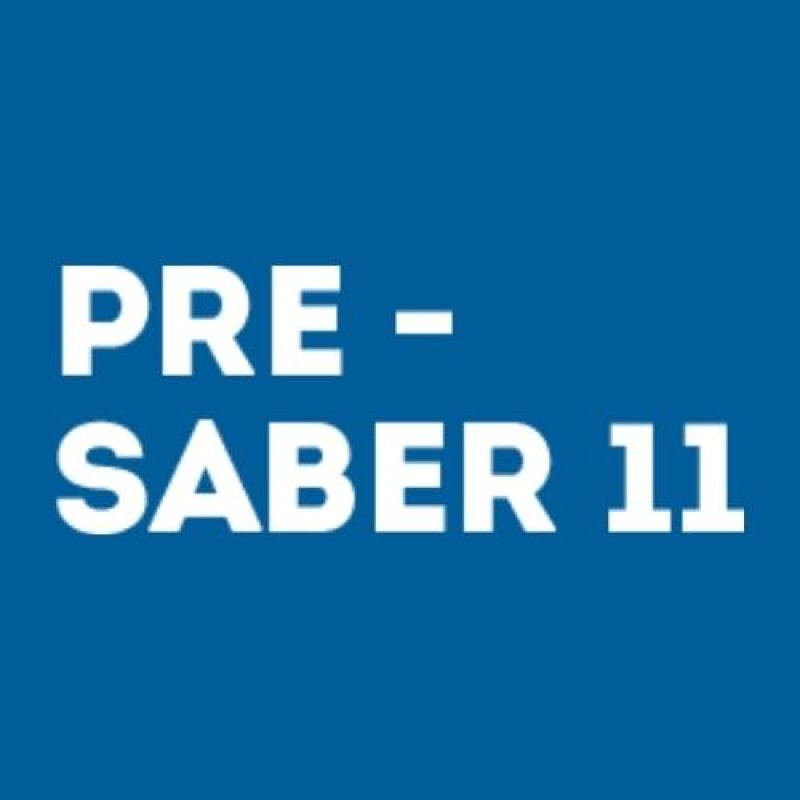Have you ever used a role play in your language class and felt something was missing? When we think of communicative activities or strategies for our language classes, role plays often come to mind. But there is another powerful, structured alternative that goes beyond improvisation: simulation.
Usually, people confuse simulation with role plays, but in this blog, you will understand the differences between each one. Simulation is a learning strategy where students are immersed in realistic situations that mirror the professional or social roles they might find in real life.
A simulation is not about acting but about functioning within a specific role, using authentic language to solve real problems in a controlled environment. (Lyu, 2006).
HOW IS SIMULATION DIFFERENT FROM A ROLE PLAY?
While both strategies involve taking on roles, their purpose and structure are very different:
- ROLES: In simulations students take realistic roles with duties and responsibilities, while in role plays students pretend to be someone, often creating parts of the context themselves.
- ENVIRONMENT: In simulations, the environment is simulated, but the behavior is real, and in role plays, both context and behavior are imagined.
- KEY FACTS: Simulations have key facts provided (e.g., name, age, job, situation). In role plays these are invented by the participant.
- FOCUS: Simulations emphasize communication as a function, and role plays emphasize acting or improvisation.

Neither simulation nor role play is inherently better than the other. They are simply different strategies with different goals. As teachers, our responsibility is not to choose the “best” but the right strategy for our learning objectives.
Simulations are particularly useful in second language teaching because they help students:
- Use language in realistic, meaningful ways
- Develop communication and problem-solving skills
- Experience social interaction in professional or community contexts
Now that you know the difference between simulation and role play, think about your own classroom:
Have you ever used simulations in your class?
Share your thoughts or experiences in the comments, let’s keep learning from each other.
REFERENCES
Lyu, Y. (2006). Simulations and second/foreign language learning: What is the connection?. Master’s thesis, University of Hawaii. ScholarSpace.
Recommended2 dieron "Me gusta"Publicado en Educación, Idiomas



















Comentarios
Super seño. bendiciones qu gusto verla por este medio ..me dio clases el primer semestre